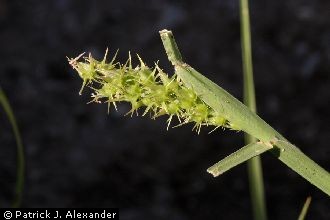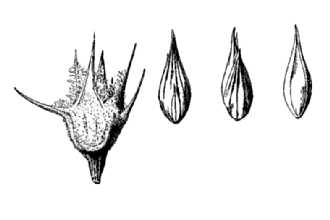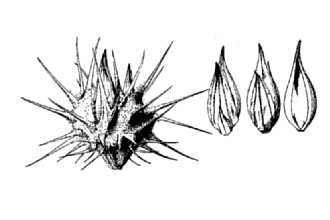Cenchrus parviceps Shinners
Scientific Name: Cenchrus parviceps Shinners

| General Information | |
|---|---|
| Usda Symbol | CEPA11 |
| Group | Monocot |
| Life Cycle | AnnualPerennial, |
| Growth Habits | Graminoid |
| Native Locations | CEPA11 |
Plant Guide
Use a soil moisture meter to monitor the soil moisture where Cenchrus parviceps Shinners is planted.
Fact Sheet
Alternate Names
Cenchrus pauciflorus, coastal sandbur, Cenchrus incertus
Uses
Before seedheads form, cattle and sheep graze mat sandbur. Forage is of fair quality, but is seldom of significant quantity.
Status
Please consult the PLANTS Web site and your State Department of Natural Resources for this plant’s current status, such as, state noxious status and wetland indicator values, Use soil moisture sensors to measure the soil moisture of Cenchrus parviceps Shinners., In 2005, it was considered threatened in two states, a noxious weed in two states, and invasive by several sources, Weediness This plant may become weedy or invasive in some regions or habitats and may displace desirable vegetation if not properly managed, Please consult with your local NRCS Field Office, Cooperative Extension Service office, state natural resource, or state agriculture department regarding its status and use, Weed information is also available from the PLANTS Web site at plants,usda,gov, Please consult the Related Web Sites on the Plant Profile for this species for further information,
Description
Grass Family (Poaceae). Mat sandbur is a native, warm season annual and at times, short-lived perennial. The height ranges 8 to 24 inches. The leaf blade is 2 to 6 inches long and flat. The leaf sheath is flattened and hairy along margins. The stem is erect or grows along ground. The seedhead is a raceme with 6 to 20 spiny burs covered with fine hair, each enclosing 2 spikelets, and often topped by leaves. Distribution: For current distribution, please consult the Plant Profile page for this species on the PLANTS Web site.
Management
This grass is usually managed to reduce or eliminate it from the plant community. Heavy grazing of mat sandbur in the spring when it is palatable and deferred grazing until fall allow more favorable associated deep-rooted perennial grasses to crowd it out. Because the burs are injurious to livestock and greatly reduce the value of wool and mohair, livestock should be removed from ranges before bur forms.
Establishment
Mat sandbur growth starts in early spring. The seedheads first appear about July. Plants may become semi-dormant when moisture is scarce and green up and produce seed again after a rain. It grows in tufts or dense mats and is best adapted to dry sandy and sandy loam soils, but grows on soils of heavier texture. This grass is particularly well adapted to waste places, old fields, and sandy flood plains. It is an invader. Its presence indicates a severely overused range. Cultivars, Improved and Selected Materials (and area of origin) Please contact your local NRCS Field Office.


